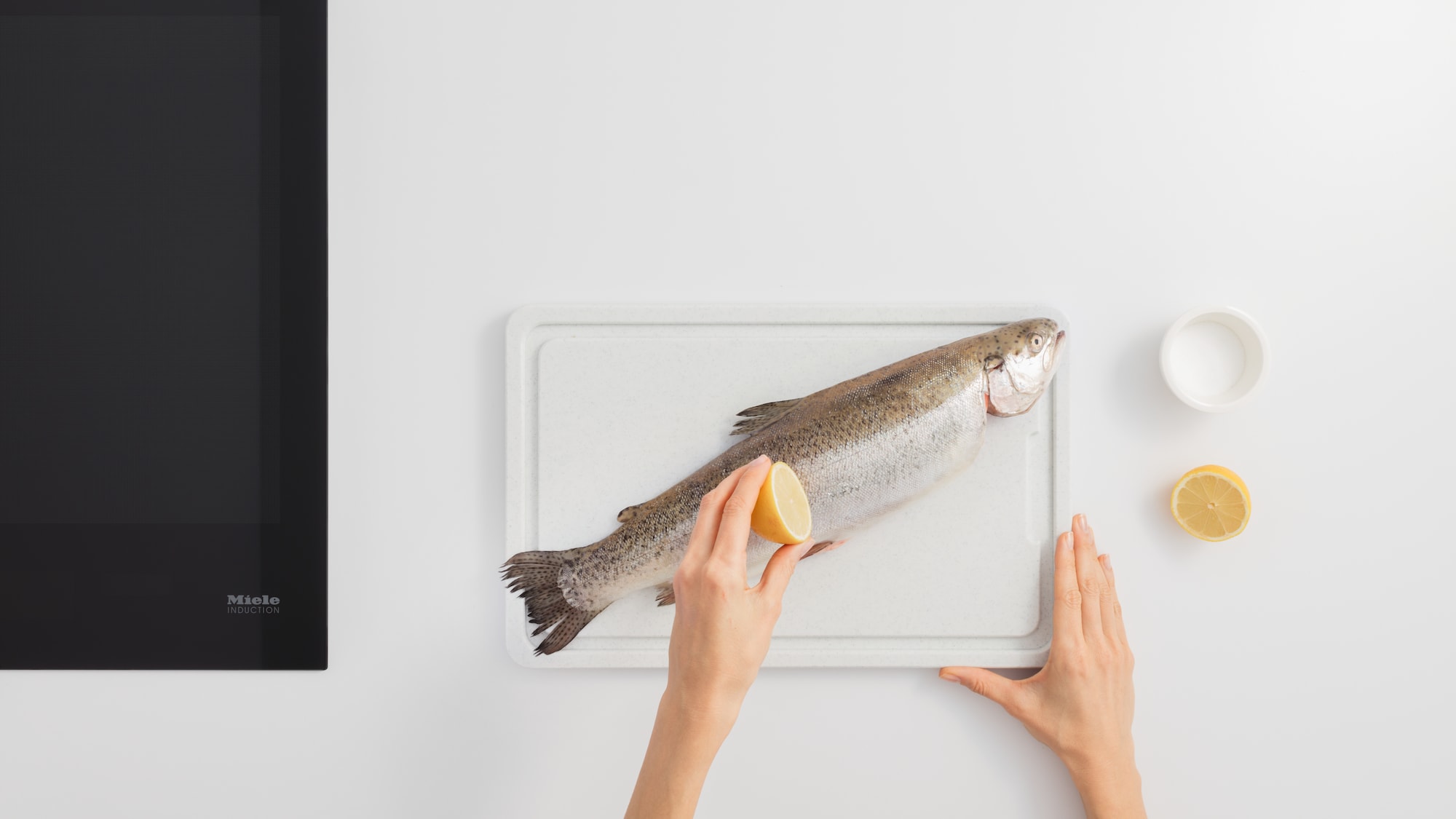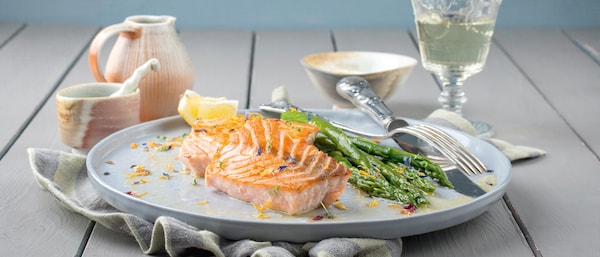The perfect team
Why fish and white wine simply belong together.
You should always be guided by your own taste, but there are still some good reasons why it’s best to serve white wine with fish.
Everyone knows you should drink white wine with fish. That’s how James Bond recognized a man was in fact an evil Russian spy – he was eating sole and drinking red Chianti. If only the world were that simple... When it comes to taste, strict rules should always be greeted with a healthy dose of skepticism. At the end of the day, taste is a very personal matter, and it’s something that can change daily or even hourly.
On top of that, fish is as varied as white wine: it can be served raw, partially cooked, cooked, fried or grilled, whole or filleted, with or without its skin. It may have white, orange, or red flesh. It tastes different every time. It is rarely served alone, but usually accompanied by a sauce. This might be simply melted butter, or it may include herbs, limes, tomatoes, peppers, onions, bacon, cream, lemon grass, ginger, or white wine. And suddenly it has a different flavor! The wine should accompany the fish without overpowering it, so it is vital to pay attention to the flavors in the fish dish in order to select the right wine.
Sugar tickles the taste buds
This brings us to the wine, which also has a wide range of flavors: acidic or sweet, fruity or mineral, with aromas of herbs, flowers, fruit, or vegetables. It often has a little bit of everything. If it has been stored for a long time in a small wooden barrel (barrique), it may also contain bitter tannins and have a scent of vanilla and wood – or old cigar boxes. Some people like it, others don’t.
The flavor of white wine is generally determined by its sweetness or acidity. Sugar brings out the flavors and appeals to our palate, while acidity provides vitality and freshness. A pinch of sugar or dash of lemon juice has the same effect on a sauce. A sweeter wine takes the edge off more bitter-tasting dishes, and an acidic wine tastes sharper when it accompanies sweeter flavors. So the wine has to be at least as sweet as the food. An acidic wine served with an acidic sauce just increases the bitterness, and high tannin content in the wine ruins the flavor of a dish, no matter how spicy it may be. The temperature of the wine also plays a role in how we perceive sweetness and acidity. A cool wine is refreshing and fruity, whereas a wine that is too warm seems dull and obtrusive.

What does this mean in practice? Fish contains starches and sugars, which provide a touch of sweetness when it is braised, fried in oil or fat, or grilled. A robust white wine with a few grams of residual sugar goes better than an extremely dry one. Pinot Gris, Müller-Thurgau, Chardonnay, and Verdicchio are all good choices rather than opting for a Riesling, Sauvignon Blanc, or Silvaner. Fish can also be accompanied by young, fruity red wines without tannins such as St. Laurent or Beaujolais.
However, a crisp Verdicchio from the Italian Marche region is the best accompaniment for sea bream with herb sauce. In this dish, oven-baked fish is served with lemon slices and a piquant herb sauce made with white wine and parsley. It is perfectly complemented by the elegant, slightly bitter note and moderate acidity of Verdicchio. The wine also contains enough juicy fruit to provide its own flavor.
How much acidity is just right?
If the fish is served raw, partially cooked or cooked, steamed or poached (and perhaps with a light, creamy sauce), the wine should be low in acidity so as not to mask the delicate flavor of the meat. Riesling Kabinett, or Spätlese, Pinot Blanc, Kerner, White Bordeaux, Vinho Verde, Scheurebe, Viognier, or Soave are all possible choices. Or how about a rosé (without an aroma of candy)?
Fish that is accompanied by strong flavors, such as tomatoes, peppers, lentils, bacon, chili, ginger, or garlic, needs an acidic, fruity white wine. Choose a dry Riesling, Sauvignon Blanc, Grüner Veltliner, Silvaner, or Chenin Blanc. Or you could opt for a fruity and acidic red wine without tannins such as Spätburgunder, Dornfelder, Grenache, Merlot, Shiraz, or Sangiovese. Or how about a Chianti? This time you might not get mistaken for a Russian spy.
Author: Rainer Meier
Images: © Getty Images/ © iStockphoto
